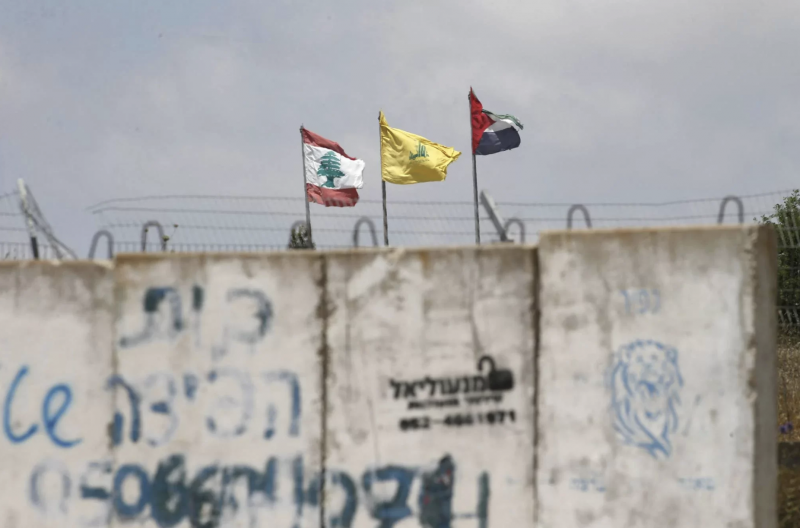
Photo taken from the Israeli side of the separation wall on the Lebanese border showing Lebanese, Palestinian and Hezbollah flags fluttering in the wind. (Credit: Jalaa Marey/AFP)
The following key dates mark the entry of various players contributing to the conflict’s regionalization.
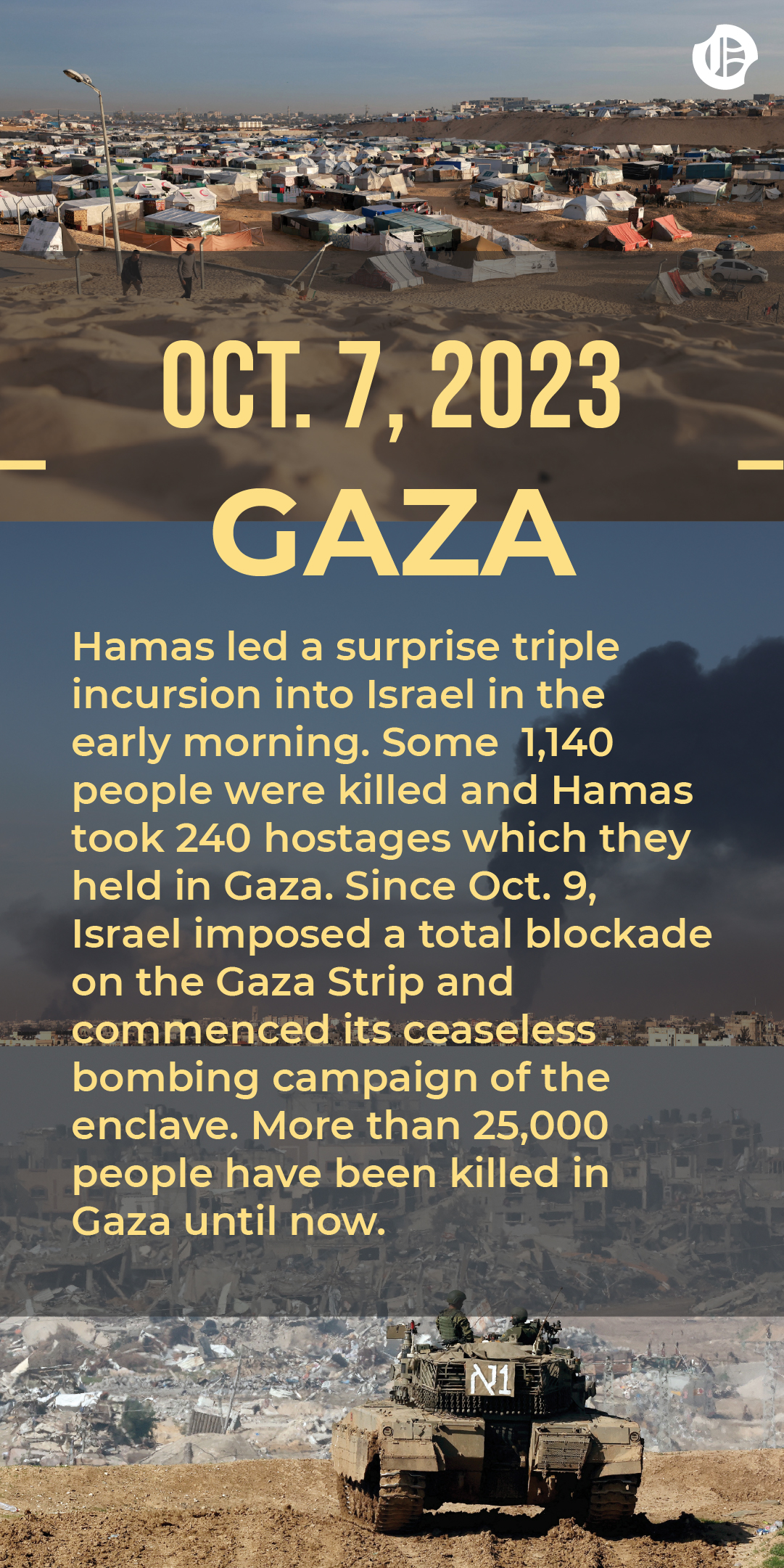 A collage of photos including displaced people in Rafah, a plume of smoke in Khan Younis, and an Israeli tank in front of the destruction in Gaza (Credit: AFP)
A collage of photos including displaced people in Rafah, a plume of smoke in Khan Younis, and an Israeli tank in front of the destruction in Gaza (Credit: AFP)
The day after Hamas’ attack, Hezbollah became involved in the conflict from Lebanon’s southern border. It was the first organization to do so. Other “resistance axis” groups in Syria, Iraq and Yemen soon followed suit.
Faced with repeated attacks on its allies and interests, Iran attempted to establish deterrence in early January, all the while keeping its distance from the war.
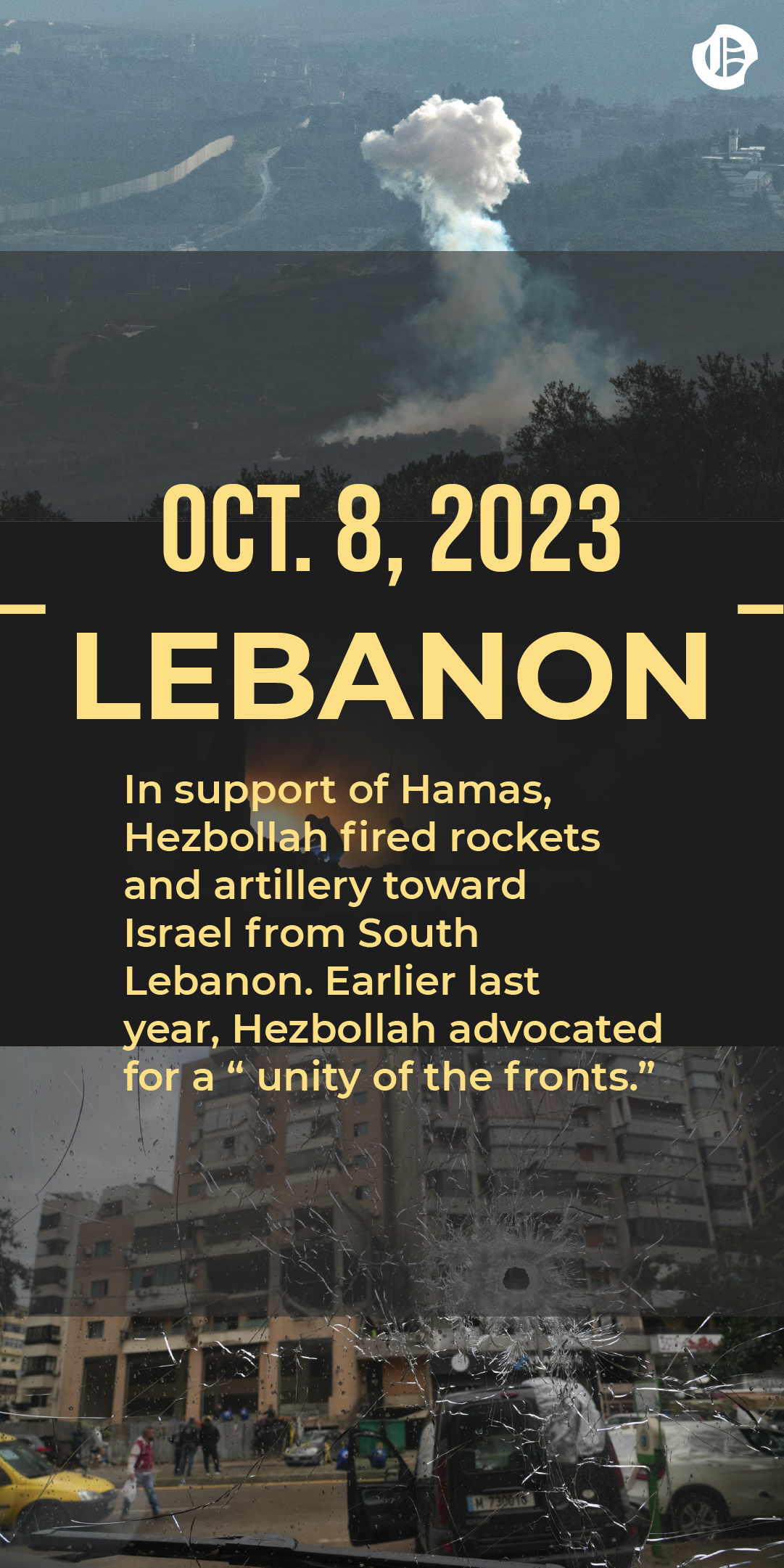 A collage of photos including fumes burning from the Lebanese village of Khiam, and scenes from the strike attributed to Israel in the southern suburbs of Beirut that killed Saleh al-Arouri (Credit: AFP and Mohammad Yassine/OLJ)
A collage of photos including fumes burning from the Lebanese village of Khiam, and scenes from the strike attributed to Israel in the southern suburbs of Beirut that killed Saleh al-Arouri (Credit: AFP and Mohammad Yassine/OLJ)
Since then, there have been almost daily exchanges of fire along the Lebanese-Israeli border.
Jan. 2: Deputy chief of Hamas’ political bureau Saleh al-Arouri was assassinated in an air strike attributed to Israel, in Beirut’s southern suburb, a Hezbollah stronghold.
Jan. 8: Hezbollah commander Wissam Tawil, who is reportedly the head of the organization’s elite Radwan Force, which Israel has long been weary of, was assassinated in a strike targeting his vehicle in Kherbet Selm, southern Lebanon.
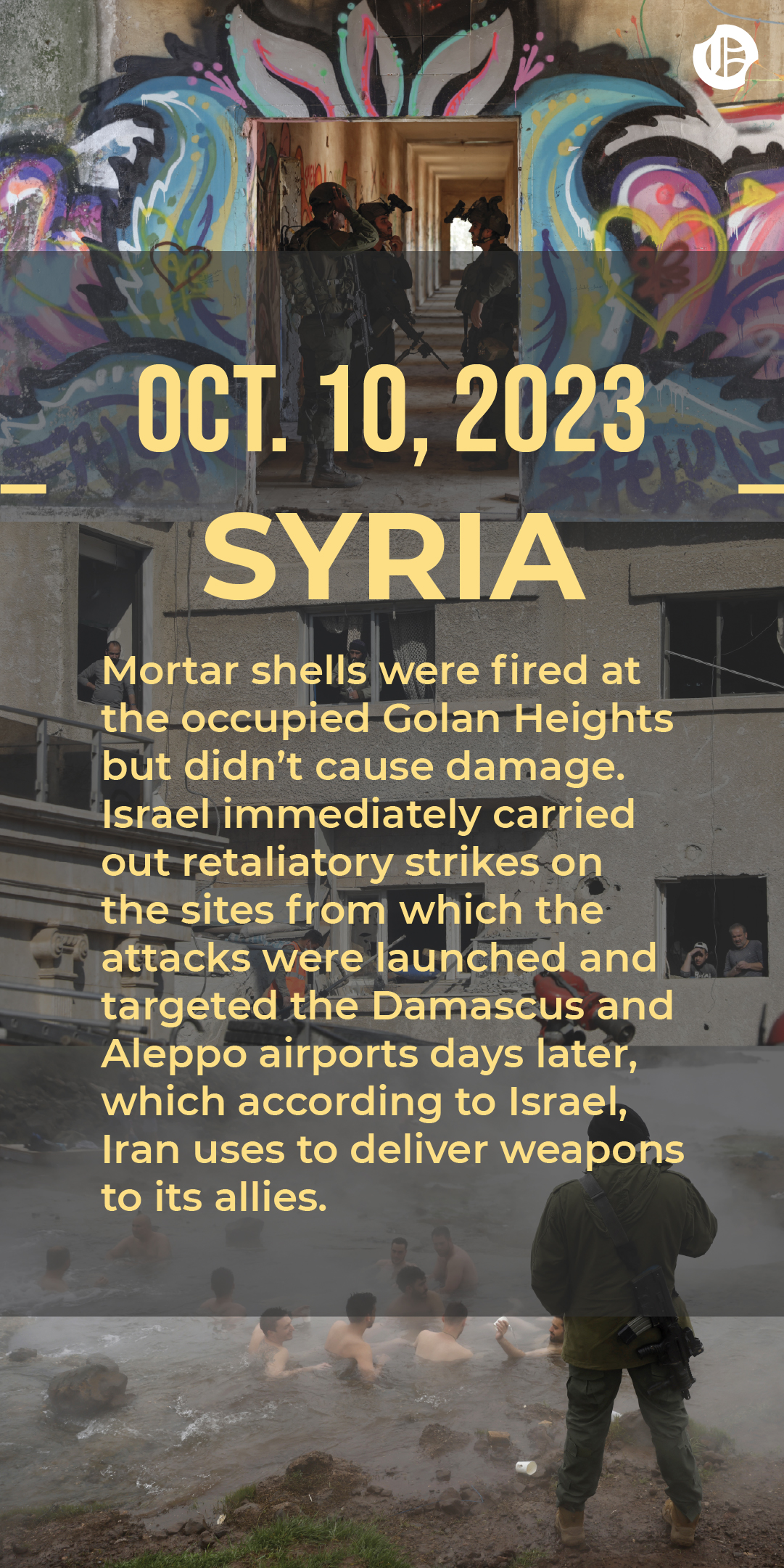 A collage of photos including Israeli soldiers holding their position in the occupied Golan Heights, Israeli soldiers sitting in the hot springs of the Kibbutz of Merom Golan, along with damages caused by an Israeli strike in Damascus. (Credit: AFP)
A collage of photos including Israeli soldiers holding their position in the occupied Golan Heights, Israeli soldiers sitting in the hot springs of the Kibbutz of Merom Golan, along with damages caused by an Israeli strike in Damascus. (Credit: AFP)
Although the Syrian government has distanced itself from the war, the Iran-backed groups operating on its soil have sporadically launched attacks on the occupied Golan Heights. Iraqi groups also targeted US interests there, prompting Washington to launch several retaliatory strikes.
Israel has also regularly targeted infrastructure linked to Iran and “resistance axis” leaders, while not always claiming responsibility for the attacks.
Meanwhile, Assad, Russia, and Turkey — which is threatening to launch a ground operation into Syria, after increasing strikes on Syria and Iraq — are carrying out intense bombardments in northern Syria.
Dec. 24: A close associate of the assassinated General Qassem Soleimani, Razi Mousavi, a senior member of the Islamic Revolutionary Guards Corps (IRGC) and the main coordinator of relations between Damascus and Tehran, was killed after missiles targeted his residence in Damascus.
Jan. 20: Five IRGC advisers were killed in a strike on a building where they were meeting with other representatives of the “resistance axis” in Damascus’ ultra-secure Mazzeh neighborhood.
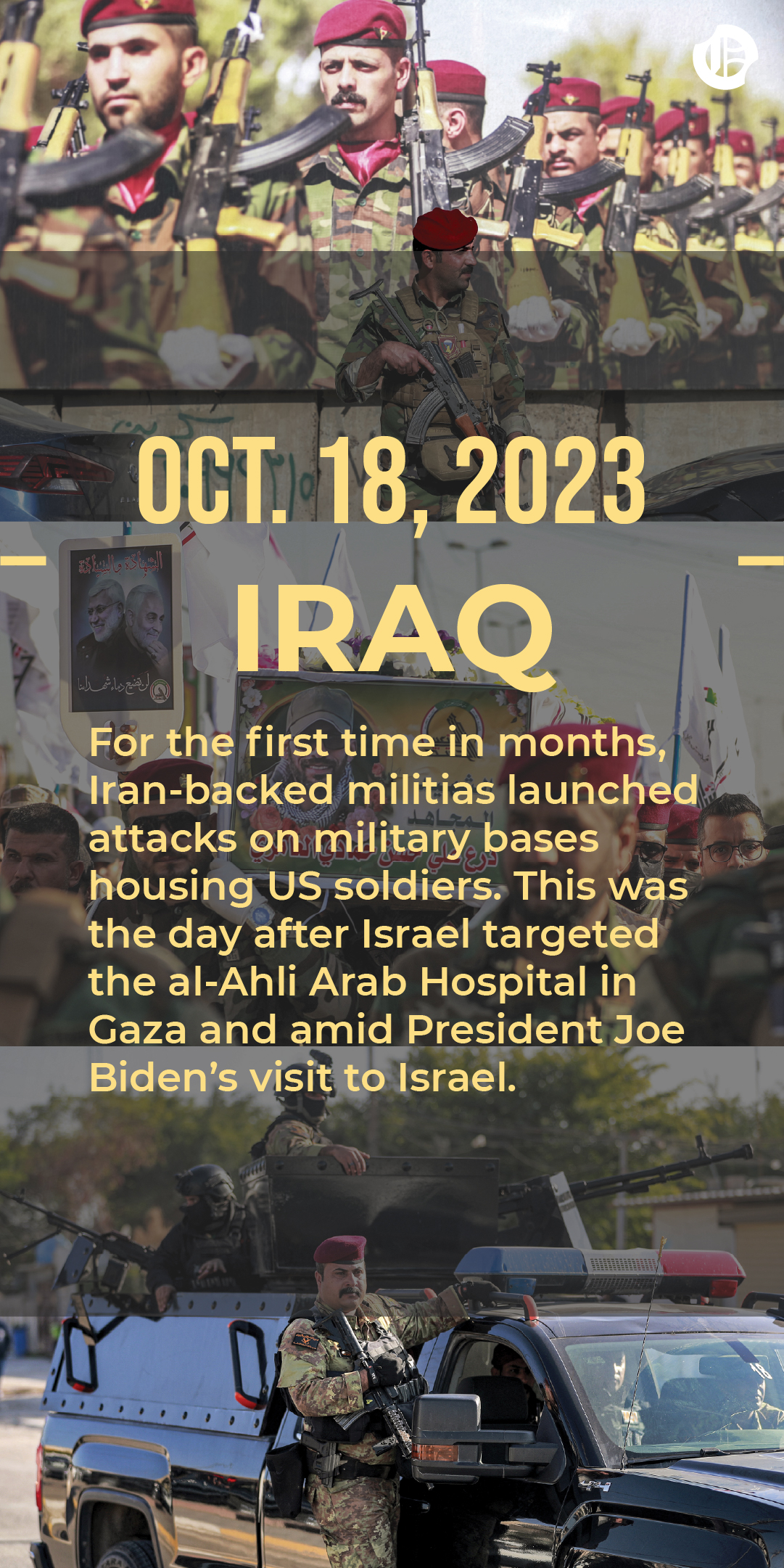 A collage of photos from Baghdad, where Iraq's Special Operations Forces (ISOF) stand guard at a funeral of a Kataeb Hezbollah member killed in an American strike. (Credit: AFP)
A collage of photos from Baghdad, where Iraq's Special Operations Forces (ISOF) stand guard at a funeral of a Kataeb Hezbollah member killed in an American strike. (Credit: AFP)
Baghdad, which has kept its distance from the war in Gaza, has sought to prevent breaches of its sovereignty. Bolstered by the political support of the Iraqi government, however, Iran-backed militias continued to launch regular attacks against US interests in Syria and Iraq — more than 100 since mid-October — and sometimes on Israel. The US retaliated with several targeted strikes aimed at re-establishing its power of deterrence.
Jan. 4: Four years and one day after the assassination of Qassem Soleimani in a US strike in Baghdad, Washington killed two of the Popular Mobilization Forces’ leaders in the Iraqi capital, reactivating Baghdad’s calls for the withdrawal of US troops from the country.
Jan. 15: Iranian ballistic missile attacks targeted Erbil, killing four civilians, including a businessman close to the Barzani clan in power in Kurdistan. The strikes were condemned by Iraq, which lodged a complaint with the UN against Iran, its neighbor and ally.
Jan. 20: The day after an Israeli strike on Damascus, a salvo of ballistic missiles and rockets targeted the al-Assad base hosting US troops in the Iraqi province of Anbar. While the damage was minimal — some US soldiers were slightly injured — the move seemed to imply the intent of crossing the red line imposed by Washington in terms of human losses.
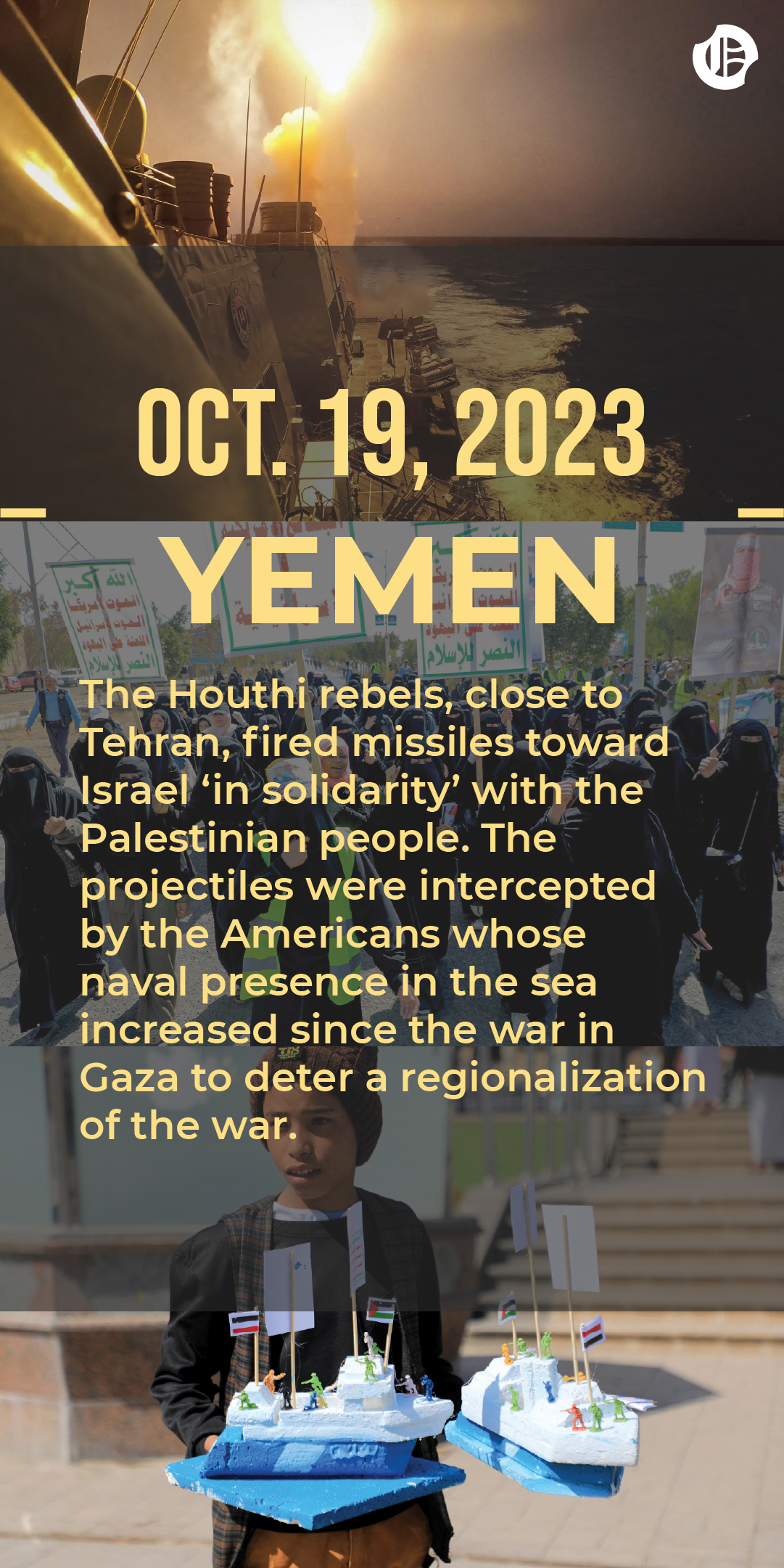 A collage of photos including a demonstration in support of Palestinians in Sanaa, the Yemeni capital controlled by the Houthis, the interception of a Houthi projectile by American forces, and a young Yemeni with a model of the seized Galaxy Leader ship. (Credit: AFP)
A collage of photos including a demonstration in support of Palestinians in Sanaa, the Yemeni capital controlled by the Houthis, the interception of a Houthi projectile by American forces, and a young Yemeni with a model of the seized Galaxy Leader ship. (Credit: AFP)
With their anti-US and anti-Israel ideology, the Houthis seek to capitalize on their support for the Palestinian cause. In particular, this serves as a diversion from the serious economic and humanitarian crisis Yemen has been experiencing for years. The Houthis have caused trouble in the Bab al-Mandeb strait, which handles around 12 percent of world maritime trade, which has since been partially compromised in the area. In response to the Houthi activities, Washington formed a coalition to secure shipping in the Red Sea.
Nov. 19: The Houthis seized Galaxy Leader, a ship owned by an Israeli tycoon, warning that ships linked to Israel will be targeted in the Red Sea. The attacks have continued since then and also targeted ships alleging no links with Israel.
Jan. 12: The US and Britain launched strikes on Houthi interests in Yemen after the UN Security Council passed a resolution condemning the rebels’ activities in the Red Sea. The strikes were carried out in response to the Houthis’ persistent attempts to disrupt shipping.
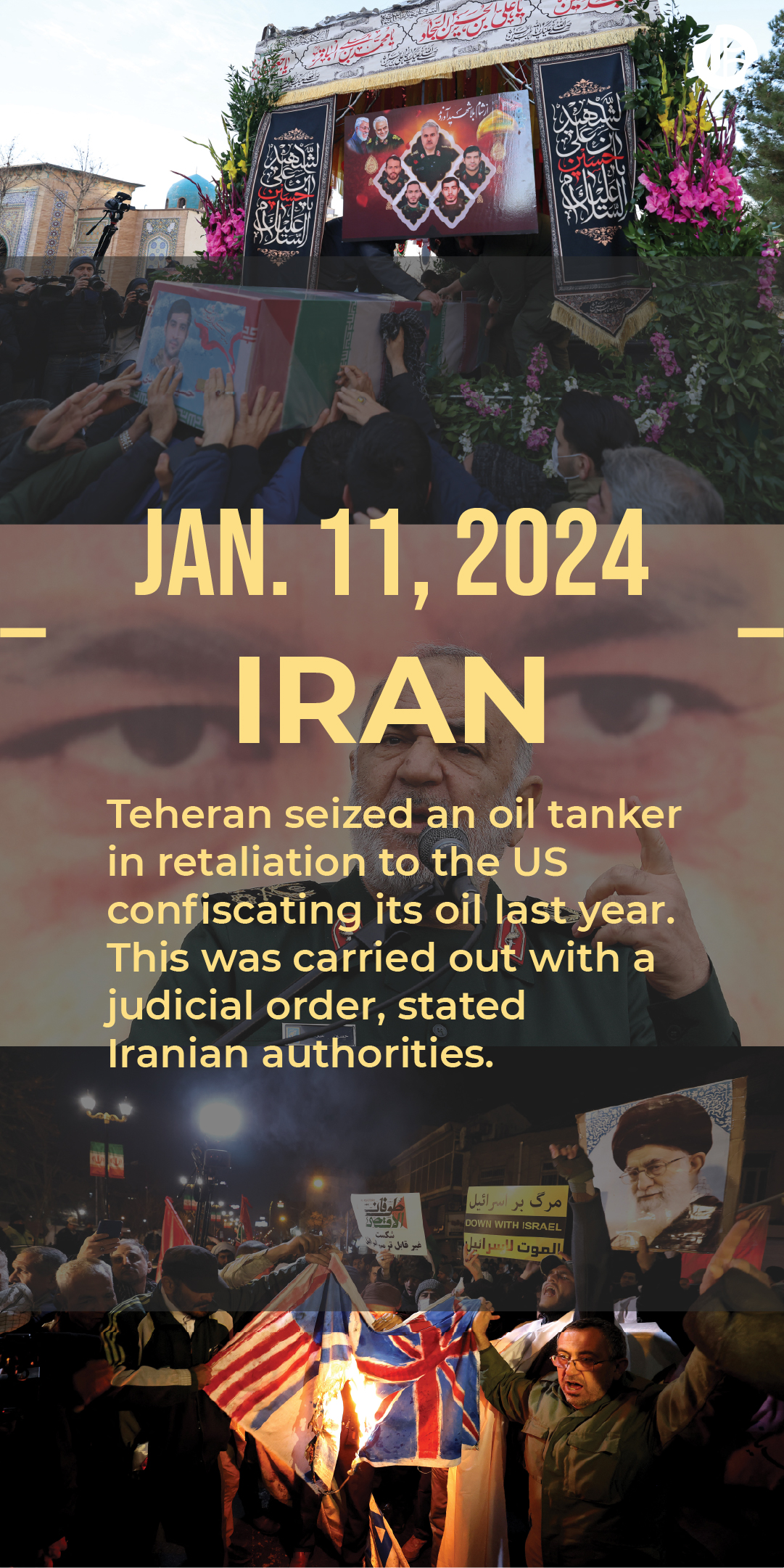 A collage of photos representing the funerals of the Iranian Revolutionary Guard Corps (IRGC) who were killed in Damascus in a strike attributed to Israel, the head of Iran's Islamic Revolutionary Guard Corps giving a speech at a funeral of a senior commander, and a demonstration in Tehran against the US and UK airstrikes in Yemen. (Credit: AFP)
A collage of photos representing the funerals of the Iranian Revolutionary Guard Corps (IRGC) who were killed in Damascus in a strike attributed to Israel, the head of Iran's Islamic Revolutionary Guard Corps giving a speech at a funeral of a senior commander, and a demonstration in Tehran against the US and UK airstrikes in Yemen. (Credit: AFP)
Facing the risk of a regional conflagration, Iran seemed to want to calm things down. For the most part, the Islamic Republic intends to remain on the sidelines of the Gaza war. Iran has made it a point to stress the autonomy of its regional affiliates, particularly concerning their actions towards Israel and the US.
Jan. 15: IRGC struck Erbil in Iraqi Kurdistan, as well as northern Syria, in response to a series of attacks on the “resistance axis” and a double attack on Jan. 3 in Kerman, Iran, claimed by the Islamic State organization.
Jan. 16: Tehran struck the separatist group Jaish al-Adl in Pakistan, which was behind an attack in Dec. 2023 that killed a dozen policemen in the Sistan and Baluchestan province. The two countries have since agreed to de-escalate.
This article was originally published in French in L'Orient-Le Jour.